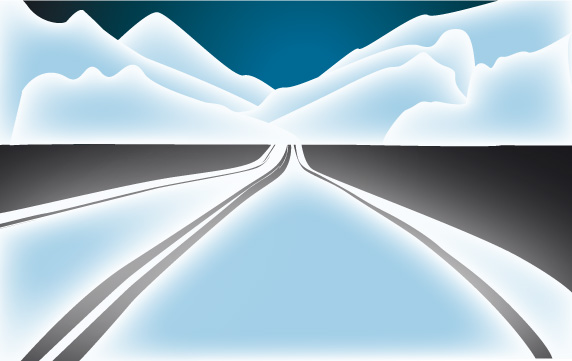HealthManagement, Volume 16 - Issue 3, 2016

Radiology is now at a crossroads. Let us expand the metaphor. If we are to proceed we are to be mindful of the traffic in our direction and be aware of the dangers of crossing the divider, i.e. the median where we have been trained to avoid and therefore not interfere with the flow of commerce conducted by other specialties. What we must also be aware of is what we may not see at first—coming at us from the side streets and seeking the right of way, thereby halting our progress. These side streets are not quiet lanes today but have become major conduits.
Two Challenges Lie Ahead
We refer to the two initiatives, which are going to challenge us now and in the medium term at least. They are artificial intelligence (AI) and genomics. We must recognise the profound interest of these two dynamic innovations (which are most likely to be irresistible) and their strategic implications. And we should also address the tactical changes we must make to maintain a niche in the caregiving enterprise, which involve where we physically situate ourselves and how we regard our specialty vis-à-vis our clinical colleagues.
We explored in a recent talk presented by the first author at the Management in Radiology meeting in Barcelona in 2015 the computerisation of interpretation of head CTs and head MRIs, ie the rendering of diagnosis by application of algorithmic patterns to findings of normality and disease within the crania, including the brain and its coverings (Health- Management.org 2015). The continuing advances in deep learning, i.e. the manifestation of the capabilities of AI, have already been applied to these common procedures placing before us a formidable competitor. We have no doubt that computer-determined diagnosis will supplant us as the diagnostic interpreter in this regard. A recent review of AI in the 25 June-1 July edition of the Economist highlights its application to imaging (Economist 2016). It has become a watchword in public discussions of the expected imperatives of AI that the radiologist will be the proverbial “canary in the mine” in this respect, as medical problem solving for the recognition of the presence and severity of disease will become like other forms of intellectual work, a function of the capability of non-human actors.
Similarly, the incorporation of genomics into medical practice will in its own way revolutionise the paradigm of diagnostic investigation. Consider this taxonomic analogy: a disease can be classified by the family it is in, the species it is a part of, and the unique identity it possesses. If a sample of blood can identify the individuality of a disease and recognise its pattern and potentiality for spread and patient survival, then the macroscopic delineation of family and the pathological labelling of species becomes irrelevant. Staging will have a new meaning in a genomic-based rendering of classification and new protocols derived from it will to a considerable extent bypass radiology. Genomics is not as far along as computer-based diagnosis, but both are hot topics and have stimulated heavy investment by many companies with deep pockets, who see in each a technological winner.
Public Aware of Cutting-Edge Science
These threats have reached the section of the public knowledgeable about headlines heralding exciting applications of cutting-edge science. Among this public are senior medical students in the U.S. and abroad. As a residency programme director the first author has been tuned into their thoughts and fears. The spectre of coming technological irrelevance of radiology is disturbing to them as they project 40 years or so of hopefully financially and intellectually satisfying employment. That is the main reason why our specialty has become less attractive to them.
What to do? First of all we must recognise these worrisome prospects. Radiology has had a glorious 40-year run, a happy conjuncture of technological discovery in the service of clinical imperialism. That, we believe, is not a negative phrase, as we have been both the managers and leaders of the incorporation of imaging in all aspects of contemporary practice. However, imperialists tend to be imperious not so much in attitude as in actions and assumptions.
The role of radiologist as it is presumed in many practices in the U.S. will soon become obsolete. The radiology department is distinctly defined spatially in a clinic or a hospital. For the radiology group such a setting is convenient and collegial. There all our machines and offices and reading areas are in a conjoined agglomeration. In the days of film where the viewed image was tangible as an object, such images were at the same time diagnostic information, archival material and in the U.S. a billing record. So our referrers came to see us. Alternators made those consultations more fulfilling than simple view box demonstrations. But with the advent of electronic depictions our clinicians no longer needed to traipse down to see us. So we have now become physically remote and we dare say philosophically distant. Many of us regard our function primarily to make diagnoses from afar rather than to interact continually and in person with our referrers.
That has to change. Image reading venues must be relocated. Paediatric radiologists must be situated in paediatrics, the neuroradiologists should be situated in the neurosurgery- neurology complex, the emergency room (ER ) radiologists must be as close to the ER as possible. The abdominal radiologist and the musculoskeletal radiologists should relocate themselves and their viewing computer as close to the doctors’ lounge or dining room as possible so they can be sure that in-person dialogues can be fostered.
Warning Residents to Avoid Subspecialty
Still, in all these are necessary but not sufficient manoeuvres to staunch the flow of intellectual capital we will forfeit as new and powerful AI and genomic interventions sweep over medical practice. We have warned residents, to whom we have a responsibility as mentors, to avoid neuroradiology and abdominal radiology (the latter at cancer-based hospitals predominantly) as subspecialty choices, because we want them not to pick a job for which the prospects will soon shrink.
Key Points
- Artificial intelligence and
genomics are going to challenge us now and in the medium term.
- The spectre of coming technological
irrelevance of radiology is disturbing to medical students.
- Radiologists have now become
physically remote and philosophically distant.
References:
Baker SR, Suberlak MN (2016) Quo vadis Eur J Radiol,85(4): 778-9.
Baker S (2015). Radiology: the end of the road?HealthManagement.org The Journal, 15(3) (2015): 228.
Economist (2016) March of the machines. Economist.[Accessed: 3 August 2016] Available from economist.com/news/leaders/21701119-what-history-tells-us-about-futureartificial-intelligenceand-how-society-shouldHealthManagement.org (2015) Is radiology entering a dark age? [Accessed:28 July 2016] Available from healthmanagement.org/c/imaging/news/mir-2015-is-radiology-entering-a-dark-age



